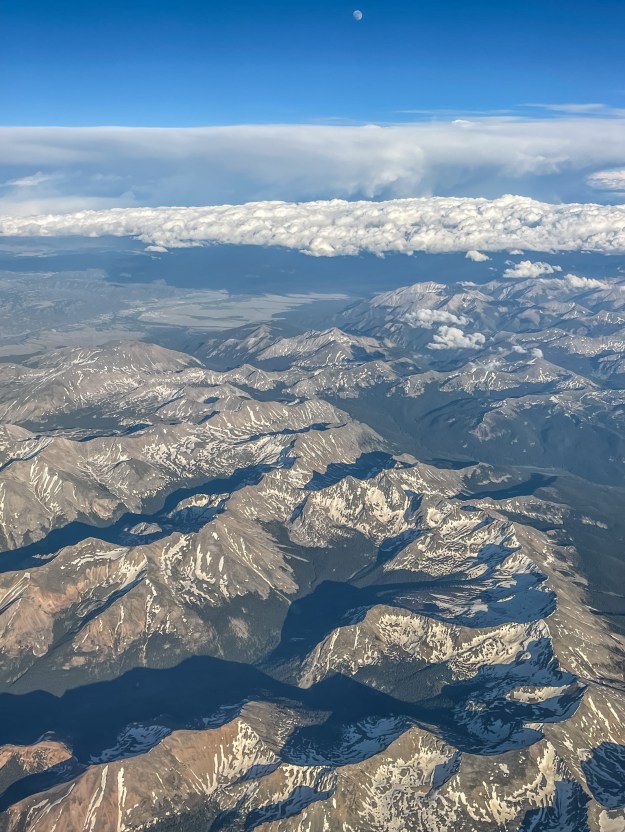I wondered who would be on our flight from Miami to Guyana since Guyana is not a big tourist destination.
Lined up, one after another were millennial aged guys sporting beards, baseball caps and wearing either a polo shirt or a checkered button up. The lack of women was noticeable.
Over the past decade, Guyana has found huge amounts of oil and gas under its coastal waters. We assume the guys are part of the workforce or there’s an international log rolling competition in the country.
We landed at the Cheddi Jagan International Airport about 10:15 pm. Research showed that the closest hotels to the airport were in the capital city of Georgetown an hour’s drive away (for a point of reference later on, we paid $50.00 for the taxi ride to our hotel).
I made up in my mind that since there were no hotels along the way it had to be jungle. Not at all. The main road was lined with commercial buildings, restaurants and homes.
Compared to our home town it was bustling. Major businesses were closed but mom and pops were open and active.
The line of traffic heading towards the airport was steady and our lane was clogged with construction vehicles. The taxi driver said two more flights were due in.
*click on photos to enlarge

View from our hotel

View from our hotel

Hotel
The capital of Georgetown sits at the mouth of the Demerara River and the Atlantic Ocean with approximately 235,000 inhabitants. Named the Garden City of the Caribbean.
A British colony was established in 1781 and named for King George. In subsequent years it was renamed and ruled by the French and Dutch. Reverting back to Georgetown after it was recaptured by the British in 1812.
It’s the 3rd smallest and one of the poorest countries in the Western Hemisphere, and the only English speaking country in South America.
Per Britannica – Georgetown is the chief commercial and manufacturing centre of Guyana. It exports sugar, rice, and tropical fruits, as well as timber, balata, bauxite, gold, and diamonds from the Guyanese hinterland. Large sugar refineries are located in the city.
Per Paige – open, stagnant, garbage filled and extremely smelly canals/drainage ditches sadly line all the streets.
The town is full of beautiful, wooden colonial houses suffering from benign neglect.
The area closet to our hotel (the receptionist’s name was Nevada) was industrial with lots of commercial and government buildings, as well as the U.S. and Canadian embassies.

Why are churches often locked up?
Our personal favorite was exploring the Stabroek Market which sits on the river’s edge and opened in 1792, bustling with the sounds of Creole rising above the hum of money exchange.
As we ventured away from the main downtown corridor fenced-in eclectic homes popped up like bunnies on viagra. Most are made of wood and some raised off the ground with stilts.
It’s visually obvious that Georgetown and beyond rest below sea level. Now – the dry season water fills the ditches and canals. I’m afraid to think of what the rainy season brings.
It averaged 87 degrees and according to our weather app felt like 97 with humidity hanging around 70 percent.
For the same cost as an hour taxi ride from the airport we hired a driver to take us out of the country and deliver us to our hotel in Paramaribo, Suriname. A mere 12 1/2 hour journey…..
It could have been an hour and a half flight but we would have missed the journey.
It began at 4:00 am in a mini van with 5 other people for a 3 hour ride to the ferry which took us to the border of Suriname.
The Guyana countryside was fascinating. The main road was lined with homes (all fenced) with a wide canal in their front yards. Wooden walking bridges allowed access.
*These photos were taken from the car (except for the first two). The driver made us keep the window closed because the A/C was on.
Every so often a portion of a canal was full of the most beautiful, large lilies. Horses and burros pulled long carts with construction goods. Palm trees swayed tall on the horizon and every half a mile or so a new sign popped up announcing the town’s name. On both sides of the border there was farming, felt like Iowa with large harvesting equipment, but it was primarily rice.
The ferry immigration process was rather quick and a two hour wait for the ferry allowed time to curl up on a bench and catch some zzzz’s.
It took 45 minutes as an old makeshift tug boat pushed us across the Corentyne River to the border of Suriname.
We’ve added Guyana to our future travel plans where we’ll hop on a small plane and travel inland to the jungle – one of the last untouched and pristine in the world.
Catch you on the other side of the river…
Like this:
Like Loading...





















































































































































































































































































































































































































































































































































































































































































































































































































